Harrow Strickland, Auburn City Schools, Auburn, Alabama
DESIGN LEVEL: Elementary-Middle School
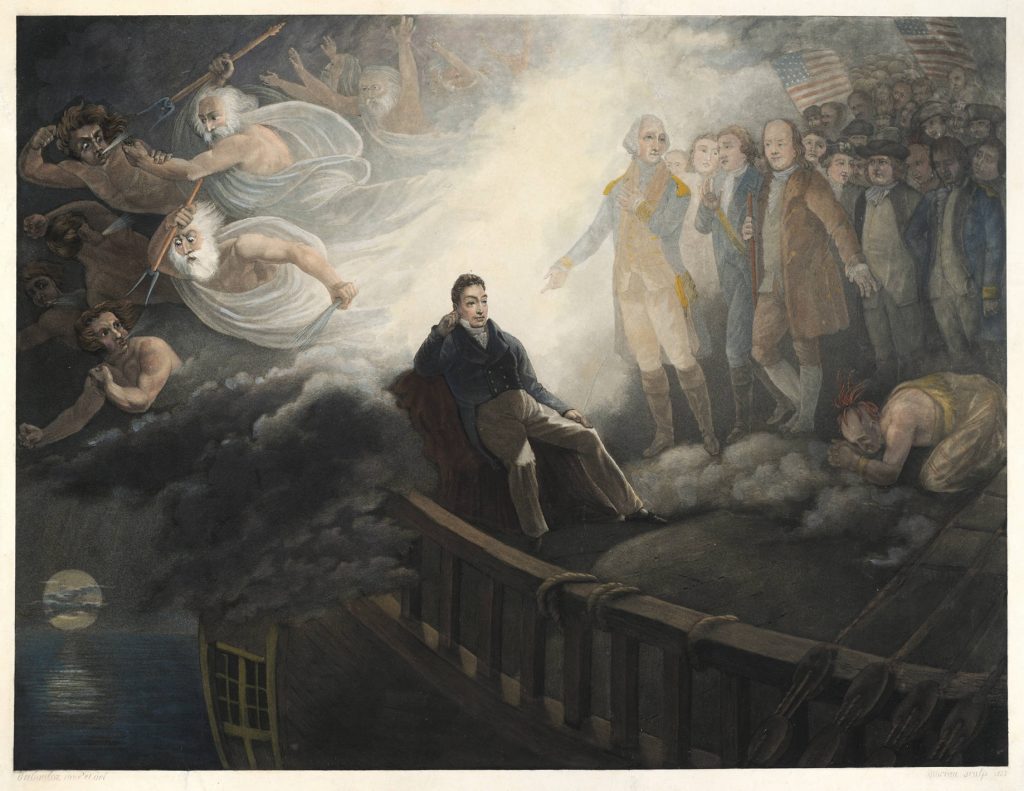
Overview
This suite of lessons is designed to provide continued practice analyzing primary sources to engage in critical thinking about how and why Americans celebrate the contributions of individuals from both the past and today’s culture. This lesson would ideally be conducted after a study of the American Revolution and the adoption of the Constitution, and in conjunction with the study of the United States in the decades leading to the Civil War. Prior to beginning to this lesson, students should be able to identity the marquis de Lafayette and his contributions to American independence.
Objectives
Students will:
- Identify how, where and why the marquis de Lafayette was celebrated on his return to America in 1824 using primary sources.
- Articulate how he embodied the spirit of American independence for citizens of the United States.
- Compare celebrity culture in the early 19th century to celebrity culture of the 21st century.
Materials
Day 1:
- Selene Castovilla, Revolutionary Friends: General George Washington and the Marquis de Lafayette (Calkins Creek, 2013)
- Lina Mann, “The Nation’s Guest: General Lafayette’s 1824-1825 Tour of the United States,” White House Historical Association
- Printed image of jug commemorating the visit of the marquis de Lafayette to the United States
- Printed image of bust of Lafayette
- Printed image of plate commemorating the landing of General Lafayette at Castle Garden in New York, 16th August 1824
Day 2:
- [Elizabeth Crosby A.L. initialed, Charlestown, 27 August 1824 : to Emily [Abbot], [Belleview?]]
- Lawrence Lewis A.L.S. Woodlawn, 14 December 1824 : to Capt. Robert Lewis, Fredericksburg
- Excerpt from Saturday Evening Post, October 16, 1824.“Everything is LaFayette, whether it be on our heads or under our feet. We wrap our bodies in LaFayette coats during the day, and repose between LaFayette blankets at night. – We have La Fayette bread, LaFayette butter, LaFayette beef, and LaFayette vegetables of every description, from the common turnip relish to the most dainty dish of celery; together with various other LaFayette articles too tedious to mention. Even the ladies distinguish their proper from common kisses, under the title “LaFayette smooches.”
Day 3:
- Le Général Lafayette [engraving]
- The Marquis de La Fayette Major General in the armies of the United States of America [mezzotint]
- General Lafayette at the Anniversary of the Battle of York Town, Oct. 19, 1824
- Lafayette. A.L.S. Paris April 12th 1826 : to Marinus Willett
Day 4:
- Conclusion de la campagne de 1781 en Virginie : le Marquis de la Fayette, Marechal de Camp des Armees du Roi, et Commandant de la Garde Nationale Parisienne
- Anne Rockwell, A Spy Called James (Minneapolis: Carolrhoda Books, 2016)
Recommended Time
Five class periods, each period 45-60 minutes (one instructional week plus time to complete final projects).
Day 1:
Review students’ knowledge of marquis de Lafayette in the American Revolution by reading aloud an age-appropriate book such as Revolutionary Friends: General George Washington and the Marquis de Lafayette.
Display the word “independence” on a smart panel, sticky chart, or white board. Invite students to share what that word means to them. Chart their responses or invite them to add their responses around the displayed word. Ask them if one person can represent the idea of “independence.” Facilitate a discussion.
Create a second chart for the word “celebrity.” Ask students to share what that word means to them. Chart their responses or invite them to add their responses around the displayed word. Ask them for examples of celebrities today. Explain that President James Monroe invited Lafayette to visit America as the “nation’s guest.” Print or share the the article “The Nation’s Guest” and read it aloud to students or allow them to partner read depending upon skill level. After reading, guide a discussion to allow students to identify ways that Lafayette was celebrated throughout his travels. Invite students to think of ways we celebrate famous people today and how this compares to Lafayette’s time in America.
Pass out copies of the objects listed under Day 1 materials. Ask them to write down what each object is, its use, and how Lafayette is depicted in each object. Facilitate a discussion on how these objects were used and what they represent. Ask students to think if there are any 21st century objects that represent similar concepts (concert t-shirts, dishware that has athletic team logo etc.). Ask students if the 21st century items represent ideals such as “independence” or “liberty.” Ask students to share why or why not.
As a final activity for the day, ask students to sketch a design of an object that will honor the contributions of Lafayette to American independence.
Day 2:
Review the previous day’s activities. Direct students to the charts made yesterday and see if they wish to add more words, symbols, etc. related to “independence” or “celebrity.”
Provide copies of or direct students to links for digitized copies of Day Three materials. Ask students to highlight sections of the letters or recollections that demonstrate emotional reactions related to Lafayette’s visit. Facilitate a discussion on what these documents demonstrate. Ask students to think if there are any 21st century interactions related to celebrities that represent similar concepts. (Facebook, Instagram, Twitter, Snapchat, etc.). Ask students if the 21st century interactions reflect high ideals like “independence” or “liberty.” Ask students to share why or why not. Lastly, ask students to create a tweet or Instagram post as if they were a member of the public who met Lafayette on his grand tour in 1824.
Day 3:
Review the previous day’s activities. Direct students to the charts made in the previous two class periods and see if they wish to add more words, symbols, etc. related to “independence” or “celebrity.”
Project the Le Général Lafayette [engraving]. Have students analyze the engraving. Facilitate a discussion to allow students to share what they noticed in their analysis. Pose the question: What does this engraving tell us about how Lafayette was viewed after his grand tour?
Project The Marquis de La Fayette Major General in the armies of the United States of America [mezzotint] and General Lafayette at the Anniversary of the Battle of York Town, Oct. 19, 1824 side by side. Ask students to reflect on the differences of the two portraits of the same man made more than thirty years apart and share what they notice.
Provide students a copy of the following letter (see links in Day 3 materials): Lafayette. A.L.S. Paris April 12th 1826 : to Marinus Willett.
Invite students to notice a reply from Willett asking for a “likeness” or portrait of Lafayette in his younger days. Facilitate a discussion on how students would feel if asked this same question by a friend or relative. What does this letter tell us about nostalgia or memory related to Lafayette?
Day 4:
Review the previous day’s activities. Direct students to the charts made in the previous class periods and see if they wish to add more words, symbols, etc. related to “independence” or “celebrity.”
Project the image: Conclusion de la campagne de 1781 en Virginie : le Marquis de la Fayette, Marechal de Camp des Armees du Roi, et Commandant de la Garde Nationale Parisienne. Allow students to work in pairs or small groups to analyze the print. Facilitate a discussion about their findings.
Read aloud an age-appropriate text such as A Spy Called James: The True Story of James Lafayette, Revolutionary War Double Agent by Anne Rockwell to explore the story of the African American man seen in the print during the warm-up. Project or draw a Venn Diagram and invite students to compare/contrast the lives of the marquis de Lafayette and James Armistead Lafayette. Facilitate a discussion on how each man represents the idea of “independence.” Ask students to consider how the idea of “celebrity” factors into each man’s life after the American Revolution. Discuss the word “inequity” and how the meaning applies to this comparison.
Ask students to consider how “celebrity” and “inequity” look in the 21st century. Lastly, have students write a letter to Congress on behalf of James Armistead Lafayette. Ask students to determine what should be given to him as compensation for his service.
Day 5:
Students may need several days in class to complete their project or the teacher may assign this as an at-home project:
Using primary sources, choose one:
- Create a 21st century object that celebrates the contribution of the marquis de Lafayette or James Armistead Lafayette to American independence.
- Write a song, poem, or a list of 10 toasts to the marquis de Lafayette or James Armistead Lafayette that honors their contribution to American independence.
- If you live in one of the first 24 states, research Lafayette’s visit to your state, locate a primary source from this event, and create a program of events to celebrate his contribution to American independence. If you don’t live in one of the first 24 states, pick one to research his visit.
- Create a shoebox float for a parade honoring the marquis de Lafayette or James Armistead Lafayette’s contribution to American Independence.
- Using an iPad/tablet camera, film your version of a YouTube video explaining why we should or should not celebrate celebrities in general or anyone in particular you feel should or should not be celebrated and explain why.
Standards Addressed
COMMON CORE: Historical Analysis and Skills Development: Reading, Writing, Speaking, Listening; Writing: Key Ideas and Details; Craft and Structure: Integration of Knowledge and Ideas
C3 FRAMEWORK:
D2.His.2.3-5. Compare life in specific historical time periods to life today.
D2.His.3.3-5. Generate questions about individuals and groups who have shaped significant historical changes and continuities.
D2.His.3.6-8. Use questions generated about individuals and groups to analyze why they, and the developments they shaped, are seen as historically significant.
D2.His.4.6-8. Analyze multiple factors that influenced the perspectives of people during different historical eras.
D2.His.5.6-8. Explain how and why perspectives of people have changed over time.
ALABAMA SOCIAL STUDIES STANDARDS:
ALCOS #8
Explaining contributions of Thomas Jefferson,… et al. and supporters from other countries to the American Revolution.
Explaining contributions of ordinary citizens, including African Americans and women, to the American Revolution.
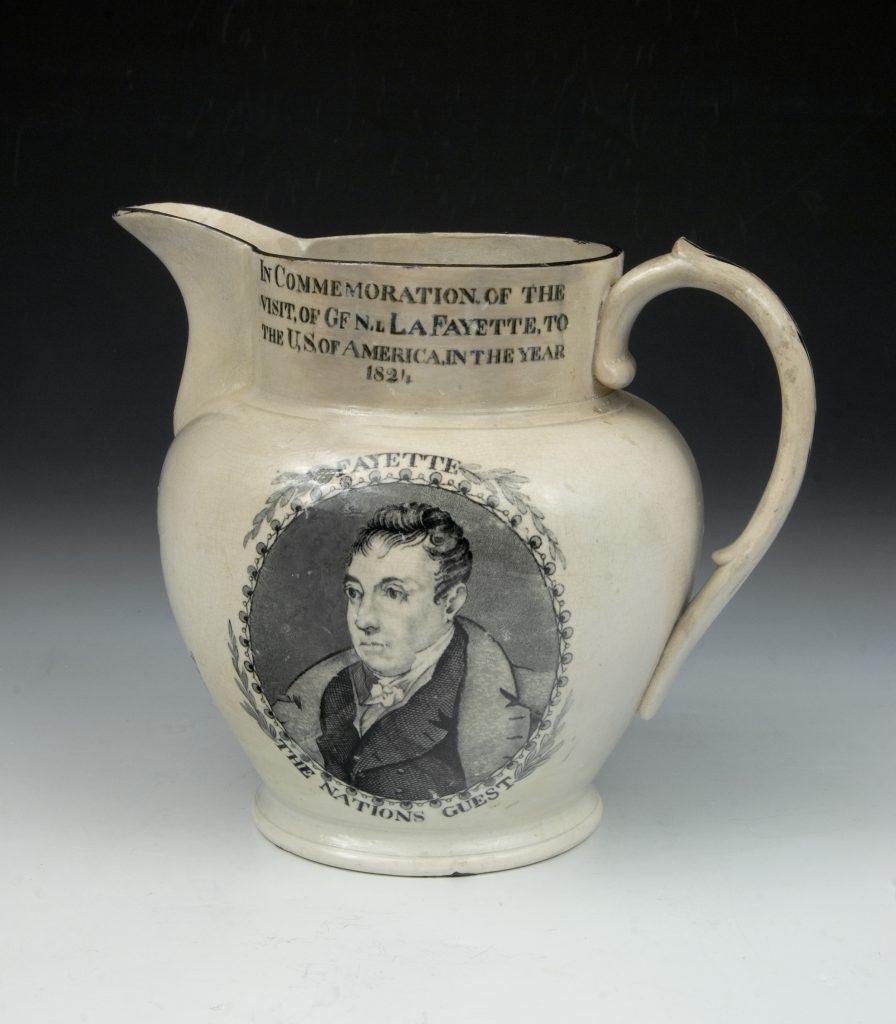
Jug commemorating the marquis de Lafayette's tourRichard Hall & Son, Staffordshire, England
ca.1824
Richard Hall & Son, Staffordshire, England
ca.1824The Society of the Cincinnati, gift of the Friends of the Boush-Tazewell House, Inc., 1991
One side bears a portrait of Lafayette (based on Ary Scheffer's full-length oil portrait painted by 1824) with the slogan "The Nation's Guest." The other side of the jug has a portrait of George Washington and related text. Made for export to the American market.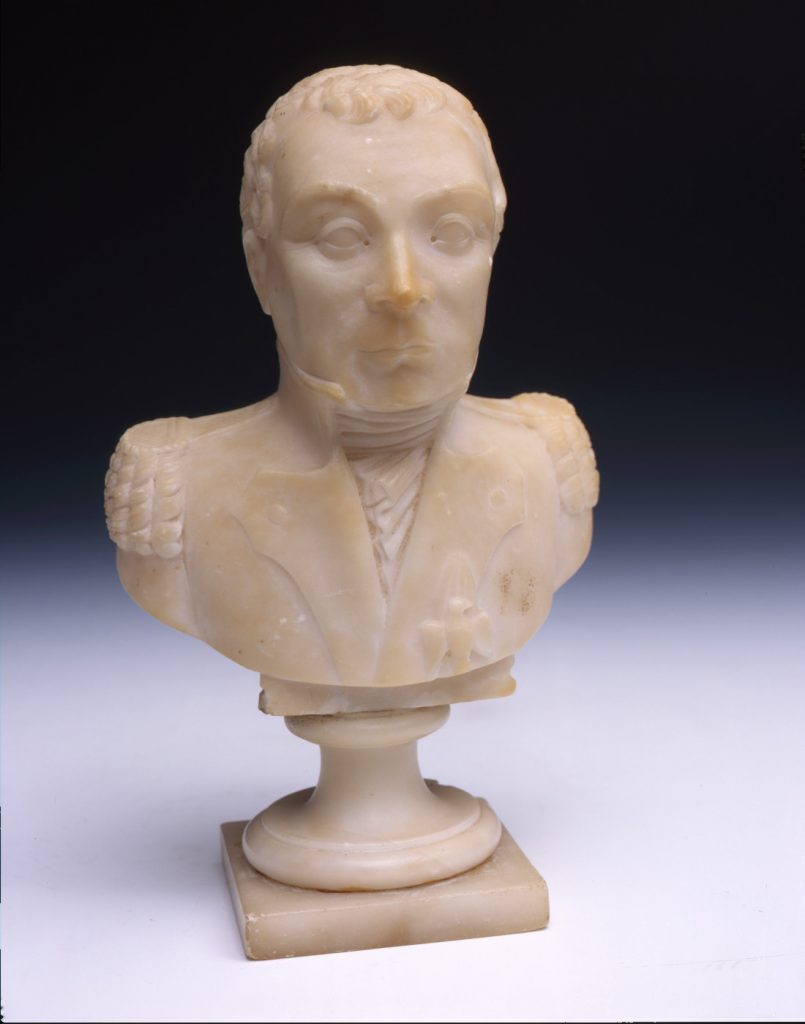
Marquis de Lafayete
ca. 1825-1830
The Society of the Cincinnati, Museum Acquisitions Fund purchase, 2005This alabaster portrait bust was probably made in Europe for the American market and sold during the last part of Lafayette's triumphal visit to the United States or shortly after his return to France.
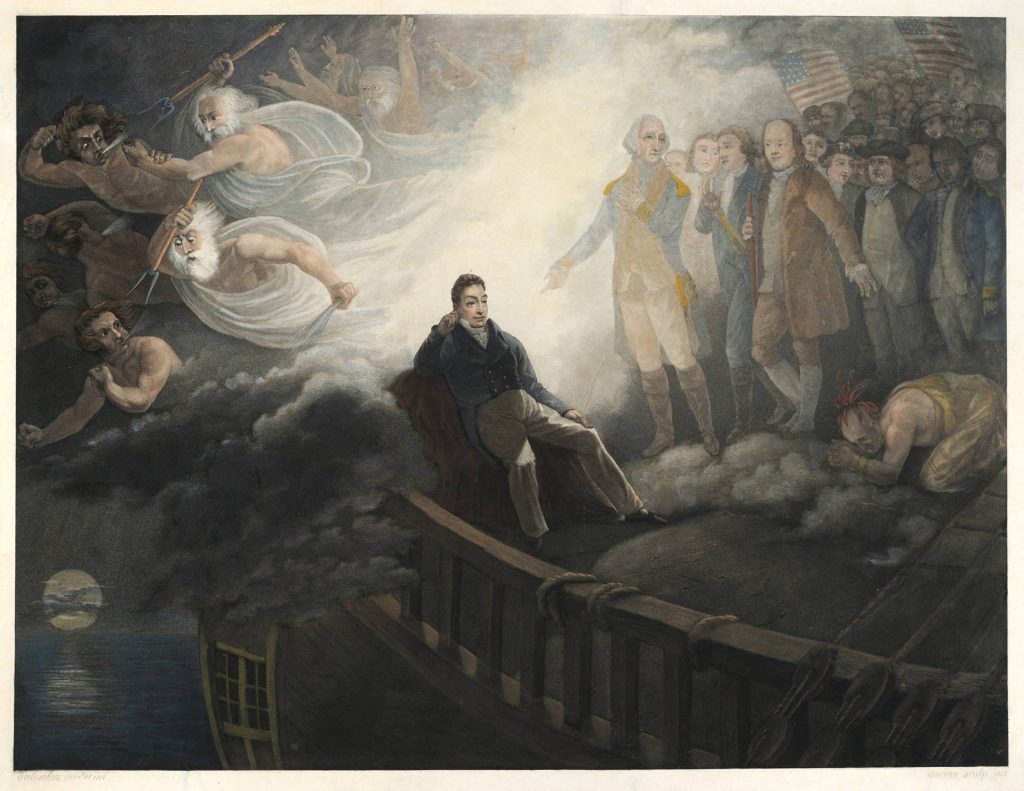
Le General Lafayette
Achile Moreau, engraver, after Jean August Dubouloz, artist
1825The Society of the Cincinnati, The Robert Charles Lawrence Fergusson Collection
Lafayette is sitting on the deck of the Brandywine with dark clouds above breaking so a shaft of light falls on him. In the clouds to the right are figures of the American Revolution, headed by George Washington.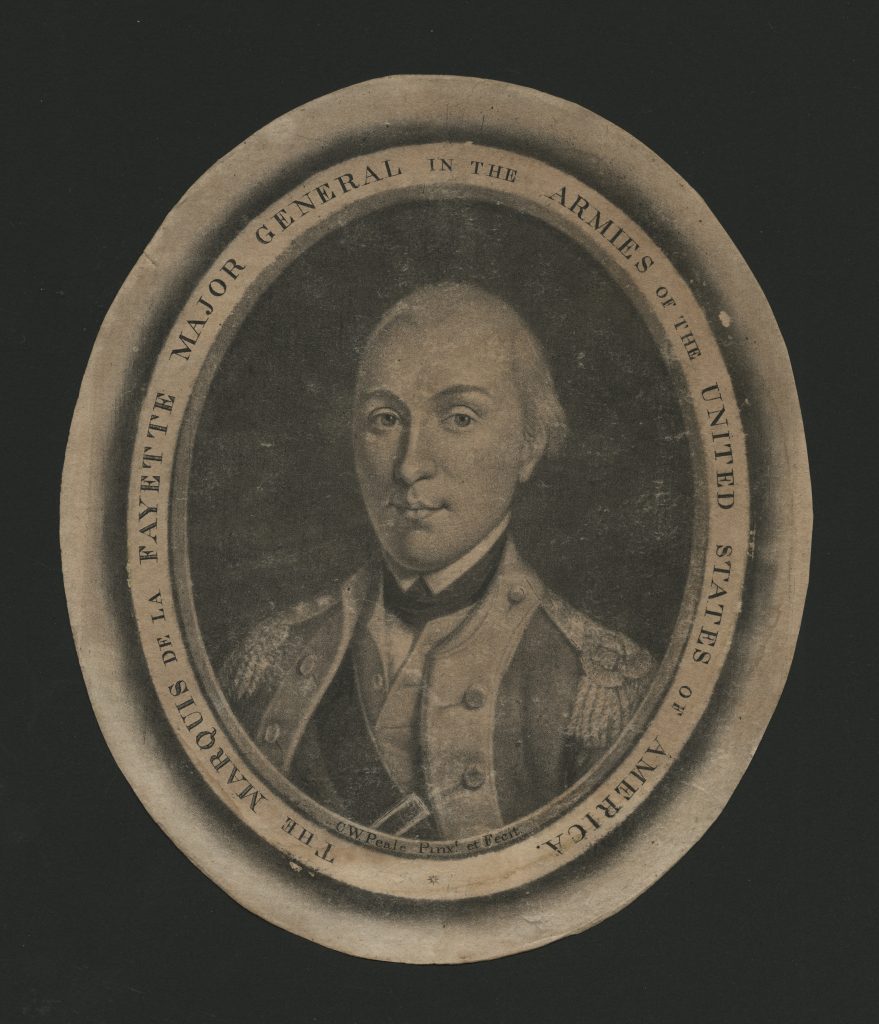
The Marquis de La Fayette Major General in the Armies of the United States of America
Charles Willson Peale, artist and engraver
Philadelphia, 1787The Society of the Cincinnati, The Robert Charles Lawrence Fergusson Collection
During the American Revolution, Lafayette became one of General Washington's most trusted officers, an international hero and a champion of liberty. This mezzotint, based on Charles Willson Peale's life portrait of Lafayette in 1780, captures the direct gaze of the idealistic young major general in his Continental Army uniform.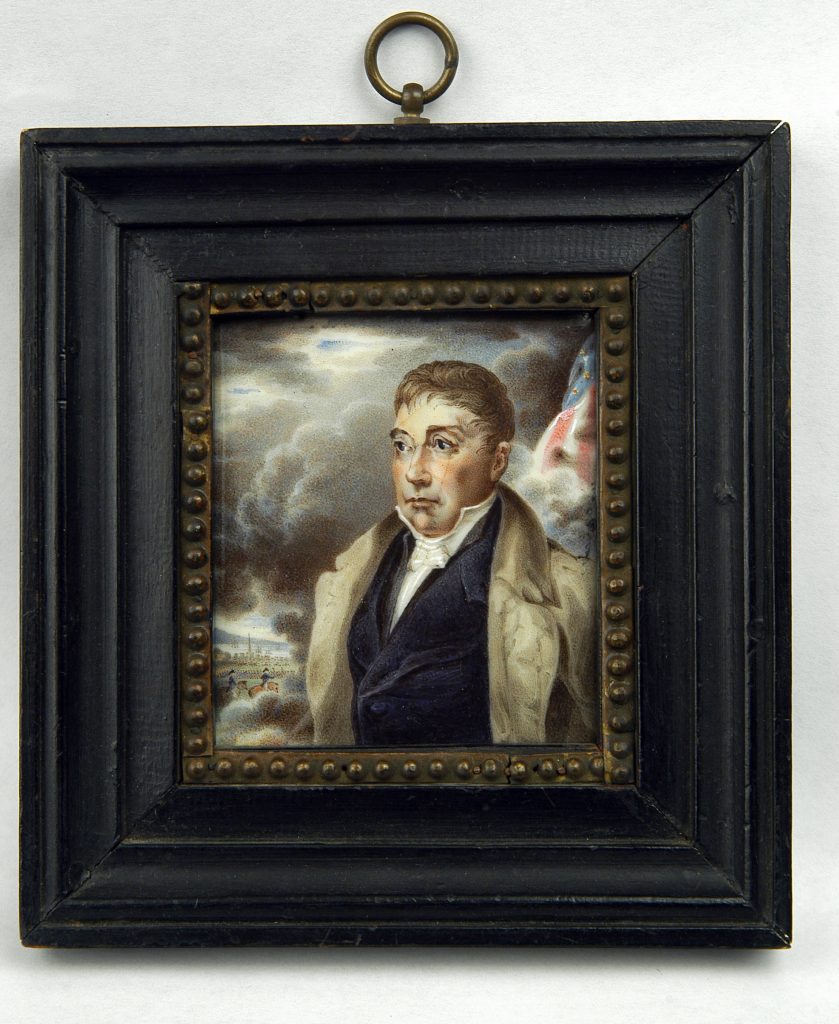
General Lafayette at the Anniversary of the Battle of York Town, Oct. 19, 1824
William Russell Birch, after Ary Scheffer
ca. 1824-1834The Society of the Cincinnati, Gift of the Friends of the Boush-Tazewell House, Inc., 1991
Exactly forty-three years after the British surrendered at Yorktown, Lafayette returned to the battlefield while on his tour of the United States in 1824 and 1825. A crowd of more than ten thousand greeted the French hero. Recalling their triumph decades earlier, Lafayette dined on the battlefield with fellow war veterans under George Washington's headquarters tent. This portrait of the French general—painted in enamel rather than watercolor, to be more durable and less expensive than typical portrait miniatures—was a souvenir of the Yorktown celebration.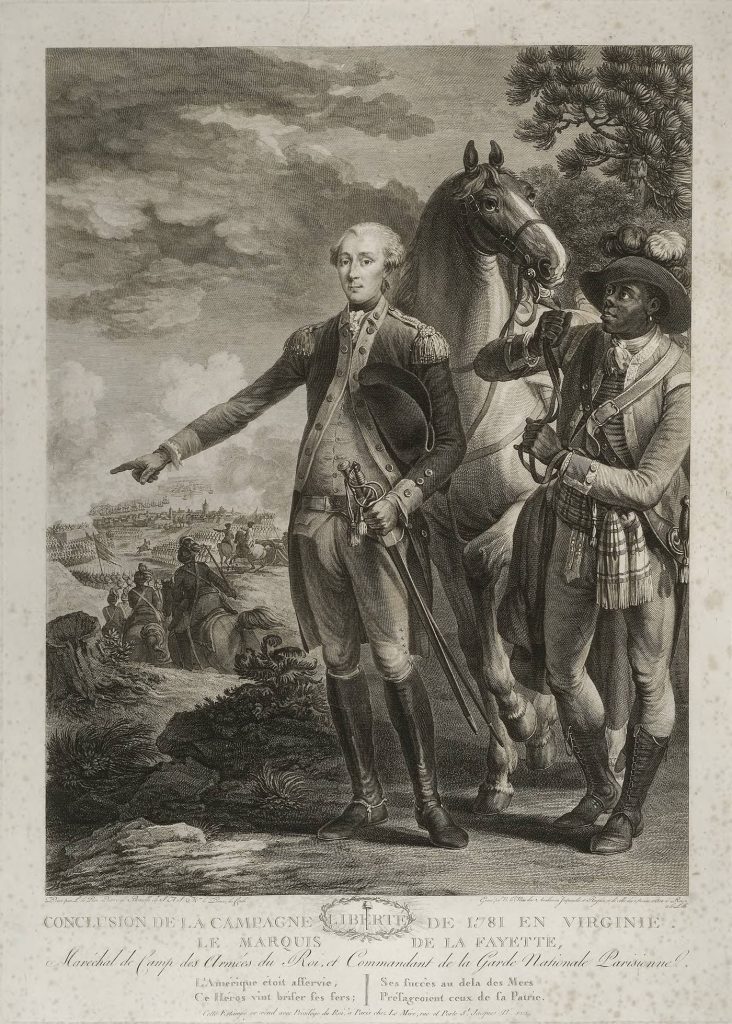
Conclusion de la Campagne de 1781 en Virginie. Le Marquis de La Fayette
Noël Le Mire, engraver, after Jean-Baptise Le Paon
Paris, ca. 1789The Society of the Cincinnati, Gift of Trafford Partridge Klotz, 1964
To celebrate the victory over the British at Yorktown and Lafayette's service in America, Noël Le Mire published an engraving of Lafayette. It was reissued later in the 1780s when Lafayette became commander of the Paris National Guard during the early years of the French Revolution. Pictured next to Lafayette is James Armistead Lafayette.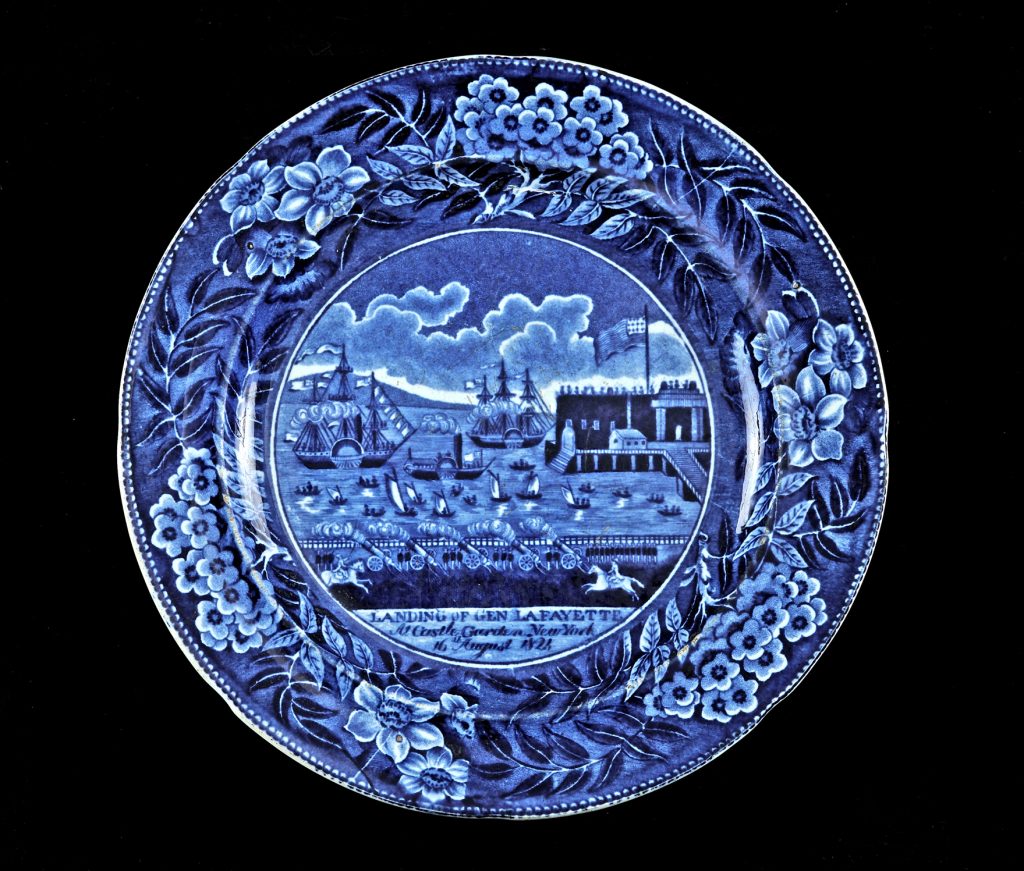
![Click for a larger view. Elizabeth Crosby to Emily [Abbot], August 27, 1824, page 1.](https://www.americanrevolutioninstitute.org/wp-content/uploads/2020/01/Elizabeth_Crosby_AL_initialed_Charlestown_27_August_1824__to_Emily_Abbot_Belleview1.jpg)
![Click for a larger view. Elizabeth Crosby to Emily [Abbot], August 27, 1824, page 2.](https://www.americanrevolutioninstitute.org/wp-content/uploads/2020/01/Elizabeth_Crosby_AL_initialed_Charlestown_27_August_1824__to_Emily_Abbot_Belleview-12.jpg)
![Click for a larger view. Elizabeth Crosby to Emily [Abbot], August 27, 1824, page 3.](https://www.americanrevolutioninstitute.org/wp-content/uploads/2020/01/Elizabeth_Crosby_AL_initialed_Charlestown_27_August_1824__to_Emily_Abbot_Belleview-23.jpg)
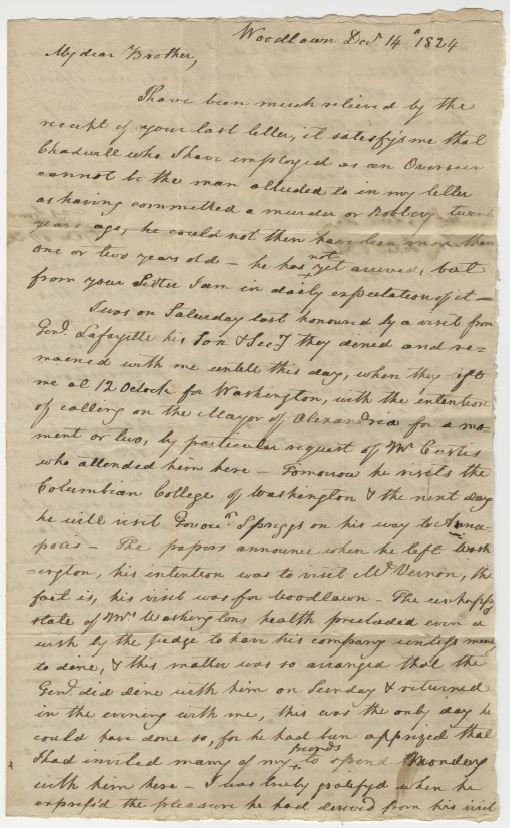
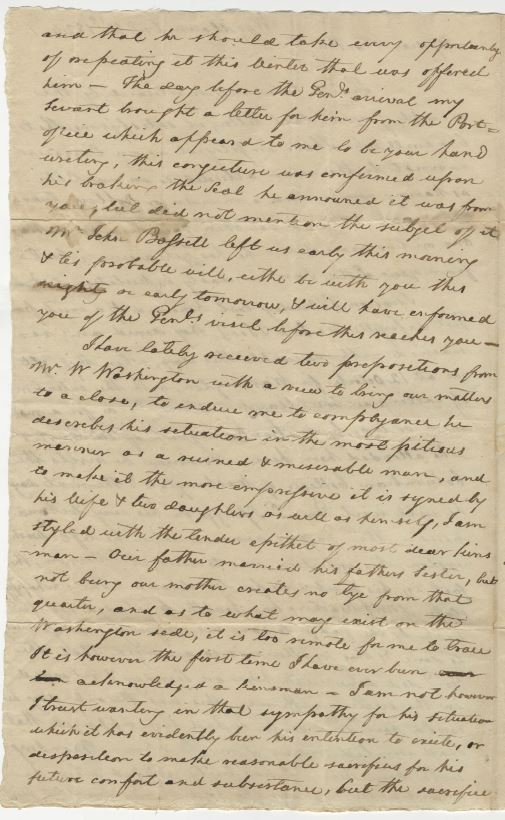
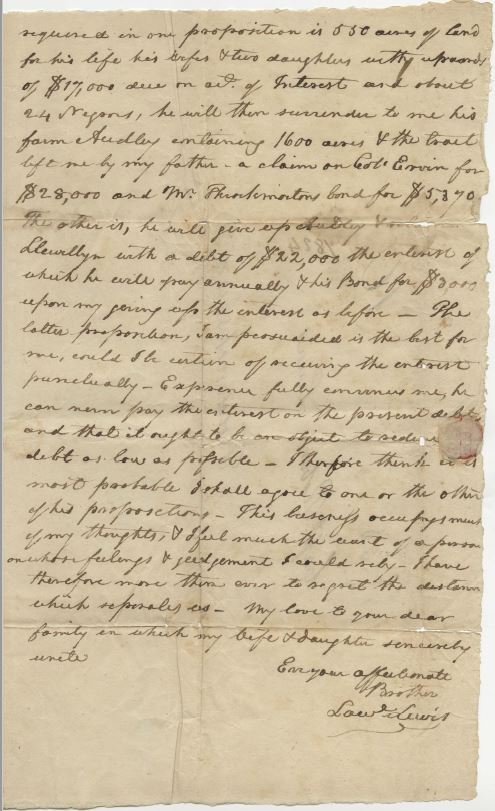
![Click for a larger view. Marinus Willett to My Dear General [Lafayette], ca. 1826](https://www.americanrevolutioninstitute.org/wp-content/uploads/2020/01/Lafayette_ALS_Paris_April_12th_1826__to_Marinus_Willett-820x1024.jpg)